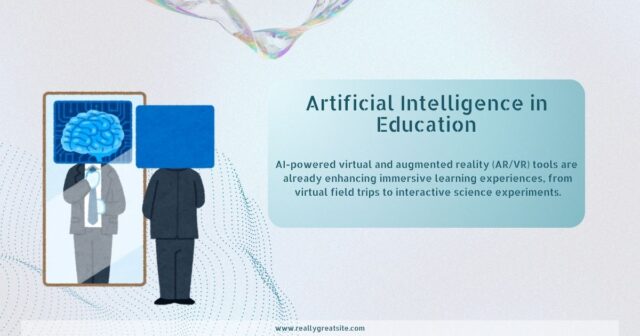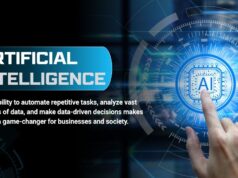Artificial intelligence (AI) no longer exists solely in the realm of science fiction. It is shaping the way we live, work, and now, the way we learn. From personalized learning experiences to streamlined administrative tasks, AI is poised to redefine education as we know it.
But how exactly is AI transforming education? What are its benefits, challenges, and future possibilities? This blog will explore the revolutionary role AI is playing in classrooms and beyond, with insights that educators, parents, and students can’t afford to ignore.
Personalized Learning Becomes a Reality
One of the most significant impacts of AI in education is its ability to create personalized learning experiences. Every student learns at their own pace and has unique strengths and weaknesses. AI-driven platforms are making it possible to cater to these individual needs like never before.
Adaptive Learning Software
Imagine a system that understands when a student is struggling with algebraic equations but breezes through geometry. Adaptive learning platforms such as DreamBox and Khan Academy use AI algorithms to assess a student’s performance in real time. They adjust the curriculum accordingly, ensuring students receive the right level of challenge and support.
Tailored Content Delivery
AI tools also tailor content delivery based on a student’s interests and academic goals. For example, educational apps like Duolingo use gamification to keep students motivated while simultaneously adapting the difficulty level based on their progress. The result? More engaged learners and improved retention rates.
Enhancing Accessibility and Inclusion
AI is not just making learning more personalized; it’s also making education more inclusive. Students with disabilities and those in underserved communities are reaping the benefits of AI-driven tools.
AI-Powered Accessibility Tools
For students with hearing impairments, apps like AVA transcribe conversations in real-time, making classroom discussions accessible. Similarly, Microsoft’s Immersive Reader is designed for students with dyslexia, offering text-to-speech and font customization features to improve reading comprehension.
Breaking Down Language Barriers
AI-powered translation tools, such as Google Translate, are assisting non-native speakers to grasp classroom content in real time. This ability to translate complex educational material across multiple languages fosters diversity and inclusivity, enabling students from various cultural backgrounds to learn side by side.
Automating Administrative Tasks
For teachers, the administrative workload can quickly become overwhelming. Enter AI, which is streamlining routine tasks and giving educators more time to focus on teaching.
Grading and Assessment
AI tools like Gradescope are revolutionizing grading by automating the assessment of assignments and tests. These systems not only save time but also provide objective feedback, eliminating the possibility of bias.
Managing Classroom Dynamics
AI-driven classroom management software, such as Classcraft, uses data analytics to track student performance and engagement, allowing teachers to identify struggling students early. This proactive approach ensures timely intervention before issues escalate.
Supporting Teachers Through Professional Development
AI is not replacing teachers; it’s empowering them. Educators now have access to advanced tools and personalized development programs to enhance their skill sets.
AI-Based Training Platforms
Platforms like Coursera use AI to recommend customized learning pathways for teachers, helping them stay updated with evolving teaching methods and technologies.
Real-Time Classroom Assistance
AI assistants, like IBM Watson, provide real-time suggestions to teachers, offering insights on student performance or suggestions for supplemental learning materials. These tools act as virtual teaching assistants, enabling educators to be more effective.
Challenges That Come With AI in Education
While the benefits are compelling, the implementation of AI in education is not without its challenges.
Data Privacy Concerns
The use of AI often involves collecting vast amounts of student data, raising concerns about privacy and security. Educational institutions need to adopt robust data protection measures to mitigate these risks.
Cost of Implementation
AI tools can be expensive to install and maintain, making them less accessible to schools with limited budgets. Bridging this gap requires both policymakers and technology developers to collaborate on affordable solutions.
Resistance to Change
Introducing AI requires a cultural shift among educators, students, and parents. Resistance to technology and fear of being replaced can hinder the adoption of AI, making training and awareness campaigns crucial.
The Future of AI in Education
Despite the challenges, the future of AI in education looks promising. Innovative technologies, evolving methodologies, and growing investments suggest that the integration of AI into classrooms is only just beginning.
Virtual Classrooms and AR/VR
AI-powered virtual and augmented reality (AR/VR) tools are already enhancing immersive learning experiences, from virtual field trips to interactive science experiments.
Lifelong Learning Opportunities
AI will also play a vital role in lifelong learning, offering adults access to upskilling programs and career development courses tailored to their needs.
AI Ethics and Regulations
Finally, as AI becomes an integral part of education, ethical considerations and regulatory frameworks will ensure it is used responsibly and equitably.
Take the First Step Toward an AI-Powered Education
Artificial intelligence is not just a tool; it’s a catalyst for transformation. From personalized learning and accessibility to automated administrative tasks, AI is shaping the future of education in profound ways. While challenges like data privacy and cost remain, the potential benefits far outweigh the hurdles.
Are you ready to adapt and evolve? Whether you’re an educator exploring new teaching tools, a parent curious about the best resources for your child, or a student eager to make the most of your learning experience, the time to understand AI in education is now.








